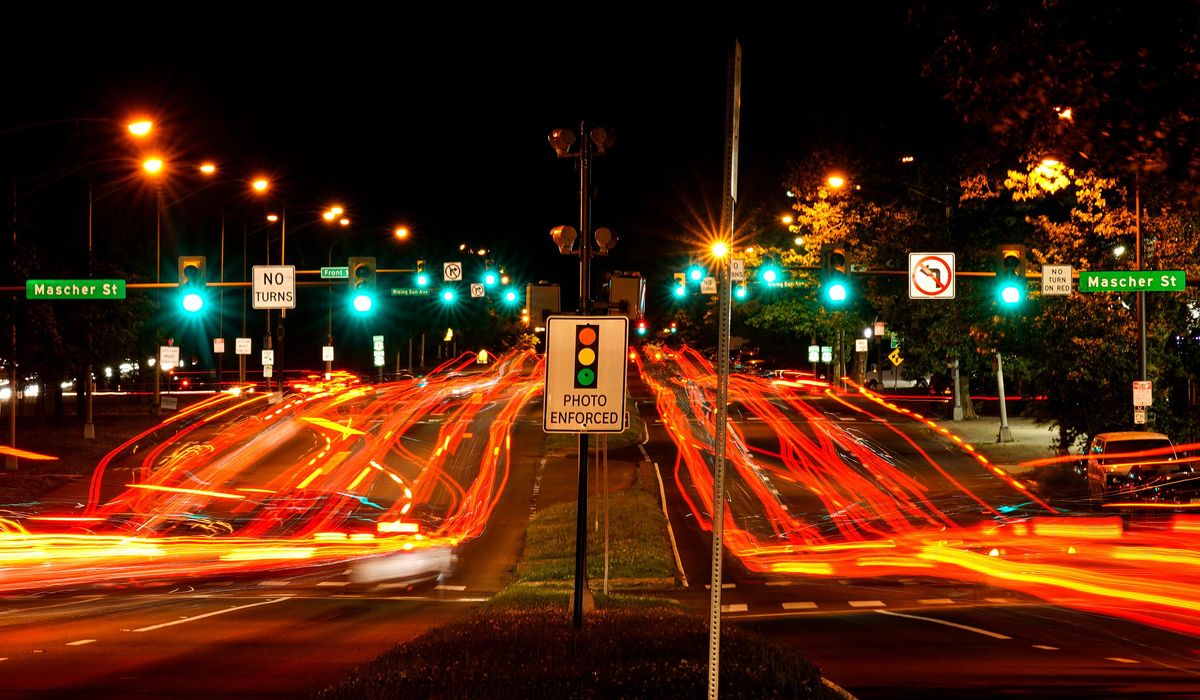


Experts from the car industry converged on the District of Columbia’s Audi Field Wednesday for the Alliance for Automotive Innovation’s Auto Tech Showcase.
The event brought together major manufacturers like Toyota, Honda and General Motors with tech companies looking to improve road safety.
Innovation to protect lives was key for every company exhibiting at the showcase. The Automotive Coalition for Traffic Safety displayed the Driver Alcohol Detection System for Safety to curb drunk driving. DADSS is an extra-sensitive breathalyzer, installed just above the steering wheel, that immediately detects alcohol on a driver’s breath and turns off the car.
Qualcomm, one of the most prominent companies at the event, detailed its efforts to install sensors in consumer vehicles to improve roadway safety and reduce traffic congestion.
With the help of its partners at AT&T and Applied Information, Qualcomm is laying the groundwork for a connective driving experience. According to Qualcomm’s director of Government Affairs, Andres Castrillon, the company can reduce collisions and deaths by installing sensors into new vehicles and investing in infrastructure.
“Right now we have 19 states that have committed to implementing this technology,” he said. “And we have federal regulators like the [National Transportation Safety Board] who say that they want this. On top of that, we have private automotive companies that have endorsed it, companies like Audi, Ford and Jaguar. Because this technology is so versatile.”
The technology will share safety alerts fast among other vehicles and pedestrians to reduce collisions. It’s already in use in Georgia and Florida and saves buses and emergency vehicles 10 seconds per intersection, according to Applied Information.
Showcase exhibitors also focused on technology that has not been widely adopted. Partners for Automated Vehicle Education urged consumers to try autonomous vehicles before jumping to conclusions about the technology.
“I think the biggest problem is education,” PAVE Executive Director Tara Andringa said. “There aren’t many people who have had a chance to ride in an autonomous vehicle, and what they think is an autonomous vehicle is just an L2 driver assistance system.”
Automotive safety supplier Autoliv showed off possible airbags for the future, including external airbags to protect pedestrians and cyclists. Autoliv also displayed an airbag for commercial trucks, many of which are not required to have the safety feature.
One of the auto industry’s biggest challenges is the shift to electric vehicles. While mass adoption of EVs is still a ways off, carmakers hope to make the shift smoothly.
During the showcase, the independent Center for Automotive Research detailed its efforts to help the industry meet its goals through education.
Most recently, the group has researched how automakers can better make the transition to EVs and how they can make those vehicles safer and more efficient for consumers. CAR published a study last year concerning the emergence of EVs’ electromagnetic interference, which can cause malfunctions. CAR’s study detailed the costs associated with EMI and how automakers can avoid it.
• Vaughn Cockayne can be reached at vcockayne@washingtontimes.com.
